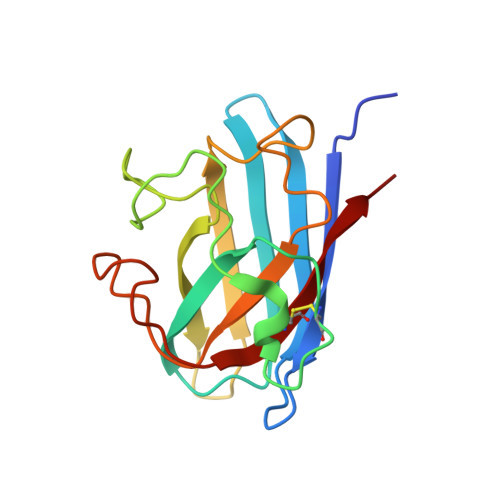Bacterial Evolutionary Precursors of Eukaryotic Copper-Zinc Superoxide Dismutases.
Wright, G.S.A.(2021) Mol Biol Evol 38: 3789-3803
- PubMed: 34021750
- DOI: https://doi.org/10.1093/molbev/msab157
- Primary Citation of Related Structures:
7B4O, 7B4P - PubMed Abstract:
Internalization of a bacteria by an archaeal cell expedited eukaryotic evolution. An important feature of the species that diversified into the great variety of eukaryotic life visible today was the ability to combat oxidative stress with a copper-zinc superoxide dismutase (CuZnSOD) enzyme activated by a specific, high-affinity copper chaperone. Adoption of a single protein interface that facilitates homodimerization and heterodimerization was essential; however, its evolution has been difficult to rationalize given the structural differences between bacterial and eukaryotic enzymes. In contrast, no consistent strategy for the maturation of periplasmic bacterial CuZnSODs has emerged. Here, 34 CuZnSODs are described that closely resemble the eukaryotic form but originate predominantly from aquatic bacteria. Crystal structures of a Bacteroidetes bacterium CuZnSOD portray both prokaryotic and eukaryotic characteristics and propose a mechanism for self-catalyzed disulfide maturation. Unification of a bacterial but eukaryotic-like CuZnSOD along with a ferredoxin-fold MXCXXC copper-binding domain within a single polypeptide created the advanced copper delivery system for CuZnSODs exemplified by the human copper chaperone for superoxide dismutase-1. The development of this system facilitated evolution of large and compartmentalized cells following endosymbiotic eukaryogenesis.
Organizational Affiliation:
Department of Biochemistry & Systems Biology, Institute of Systems, Molecular and Integrative Biology, University of Liverpool, Liverpool, United Kingdom.















